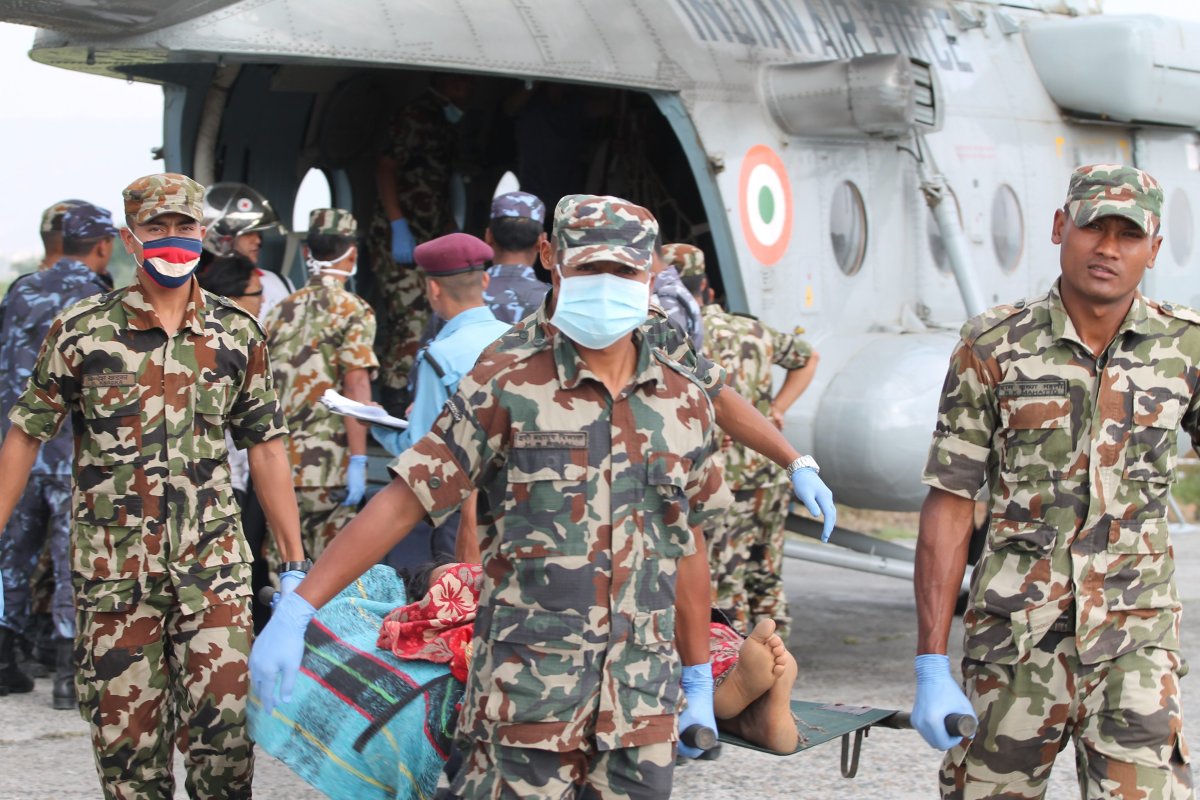TORONTO – A Canadian doctor who recently returned from a medical aid trip to Nepal says he is frustrated with the lack of supplies and aid delivered by United Nations troops on the ground.

Dr. Dybesh Regmi was in the city of Bhaktapur in the Kathmandu Valley, where 19,000 homes were destroyed, when the second earthquake hit while he was transporting medical supplies.
“At that moment the noise and the feeling I got when the second earthquake hit was absolutely just unbelievable – I couldn’t stand with two feet on the ground,” he said.
“Within this area we were at there was a tent full of children, and they started screaming and parents started running around and looking for their kids to make sure they were safe, so it was pretty much chaos when this one hit.”
The Toronto doctor of Nepalese origin said he then treated patients in the hospital there after many had been injured returning to their homes to retrieve supplies when the second earthquake struck.
He then travelled to the small village of Thakani in the Sindhupalchok District north of Kathmandu, where he put together a local medical team that delivered about 700 kilograms of food such as rice, potatoes, lentils, tea and sugar, in addition to medical supplies and tents from supporters in Toronto.
WATCH: Second Canadian medical assistance team heads to Nepal
“The roads were terrible, there were landslides occurring along the way. We did see a few rock slides also occur because there were ongoing tremors,” he said.

Get breaking National news
Regmi said about 130 homes had been completely destroyed in the village, which had no electricity or local hospital but did have access to running water.
His medical team set up a camp in the village and began treating patients, administering vaccines and distributing food, soap and sanitation equipment.
But he said that more could be done by UN forces on the ground in remote villages to deliver aid directly to earthquake victims.
“To much of my frustration they came there and they noted what they were there to note, which is what the accessibility was like and perhaps how many people died and so forth, but they really didn’t bring anything with them,” he said.
“There was no relief supplies that came in this vehicle, and I really didn’t quite understand the point of being able to access an area that is so inaccessible and yet not being able to take anything with you while you have the vehicle to do so.”
READ MORE: UN official says earthquake-hit Nepal needs to enforce building laws
Regmi said that if the UN could make it into these villages, they should have been able to deliver supplies as well.
“But just to show up there with a pen and a paper doesn’t really make a difference in the short term. I mean if you’re going to write a report and go back and say ‘OK we’ve got accessibility here’ by the time that report is out or whatever it is, there’s people that possibly could die and I think one should always put that in the back of their mind,” he said.
“I think that oversight is not acceptable in these type of situations where you show up with something and there’s really nothing there to offer the local people while they storm to the vehicle expecting there to be something.”
A spokeswoman for UN Secretary-General Ban-Ki moon said that the organization has been doing its best to reach remote, inaccessible areas on a daily basis, but wouldn’t characterize it as saying that aid was not being delivered.
“We need to carry out these assessments to kind of know where the gaps are and I’m sure once this assessment team got there and said ‘oh my goodness, this area’s been hard hit’ they immediately relayed that to the relevant agency,” said Eri Kaneko, Associate Spokesperson for the Secretary-General.
“An assessment team, unfortunately, its function is to carry out assessments so it would be great if it could carry everything in the world but unfortunately I think we’ve done our best. I think we’ve done a pretty good job of trying to get in what we can and obviously that continues.”
READ MORE: UN calls for urgent aid for Nepal after devastating earthquakes
Regmi said he has plans to return to the region in the coming months to continue to provide aid, shelter and medical treatment to earthquake victims, three areas that he said are of great hindrance to the recovery efforts for the country as monsoon season approaches next month.
He recommends Canadians donate to charities with an active presence on the ground, such as the Canadian Red Cross and Global Medic, but stresses that the lack of coordination of relief efforts among different organizations poses a bigger challenge to delivering aid, causing some villages closer to the capital to receive more relief as opposed to others located in remote areas.
Regmi has also set up an online fundraising campaign where he hopes to raise money in order to support sustainable rebuilding efforts in the earthquake stricken country.







Comments